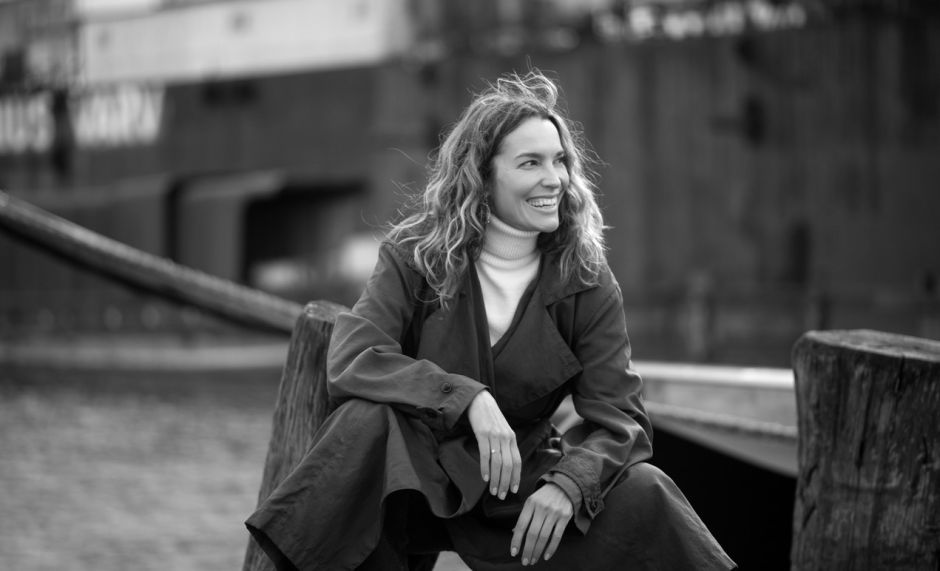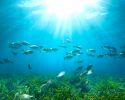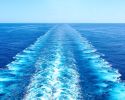She had an appointment with captain coward

It’s not about why accidents happen – but why they are not detected. Some shipping companies are unfortunately marked by a culture where people don’t dare to raise alarms about errors and shortcomings, says psychologist Anna Frost. She is now helping to develop a new leadership training program for shipping companies on Donsö, with the goal of creating safer teams.
On January 12, 2012, the cruise ship Costa Concordia ran aground off the island of Giglio in Tuscany. The accident made global headlines and has since been the subject of countless documentaries — not only because 32 people died and 60 were injured, but mainly because of how the captain, Francesco Schettino, acted before and after the disaster.
“I was on holiday with my children and became very anxious when the news broke,” says Anna Frost.
Schettino had, without authorization, allowed the vessel to deviate from its route to perform a so-called “sail-by salute” — a gesture to the island. But the ship came too close, struck a reef, and tore a large gash in the hull. Power went out, the lights flickered, and passengers clearly sensed that something was wrong. Yet the captain and crew reassured everyone that nothing serious had happened. To the shore-based control center, Schettino reported that it was merely an electrical issue and that the situation was under control.
Meanwhile, safety officers warned him that the engine rooms were flooding. Still, Schettino delayed giving the order to abandon ship. It wasn’t until an hour later, when the vessel had listed heavily, that he finally issued the command “abandon ship.” The evacuation turned chaotic. Many lifeboats could not be launched as planned, and amid the turmoil, Schettino left the ship before all passengers were safe — an act that drew global outrage. The media soon dubbed him “Captain Coward.” He was later sentenced to 17 years in prison.
Who was this captain? Had she met him?
During her vacation, Anna Frost contacted her former employer daily, hoping for an answer. After five tense days, she finally got it.
“He had been scheduled to meet with me five times, but each time he had an excuse not to show up. If the meetings had taken place, there would have been a written report with a risk assessment and an evaluation of him. It was actually a relief that I never met him.”
Between 2007 and 2011, Anna Frost worked for Marine Profile, a Swedish company of maritime psychologists specializing in mapping onboard cultures and assessing officers’ leadership suitability with a focus on safety. They were mainly hired by cruise companies — Costa Cruises among them.
“Over a few years, we met with around a hundred of their officers. Simply put, we carried out a form of risk assessment, usually in connection with promotions or new hires. At that time, we were practically the only ones in the world doing this — and it paid off. One company that invested early in such screening reduced its incident rate to zero, which of course saved them substantial amounts.”
Costa, however, wasn’t as fortunate. According to Frost, leadership aboard the company’s ships was shaped by a macho culture in which many officers viewed themselves as untouchable.
“When I pointed that out, the response was more or less, ‘That’s just how it is.’ The culture was accepted. For example, it took a long time before anyone on board dared to go against Schettino’s orders. Starting the rescue operation was basically an act of mutiny.”
For Frost, assessing officers became a sorting process that felt insufficient.
“It was basically thumbs up or thumbs down. I wanted to do more — especially when I met young officers with potential. I wanted to help them understand how people work, communicate better, and sharpen their leadership. That’s what drives us psychologists — helping people reach a better place.”
Frost left maritime psychology to work in leadership development at a management consulting firm, designing programs for major multinational companies such as Ericsson, Assa Abloy, and Electrolux.
“There was a lot of travel involved, and after seven or eight years I wanted more time for my family. I started my own business and began collaborating with Leif Denti at the University of Gothenburg, focusing on leadership linked to organizational innovation.”
Her independent work has also brought her back to the maritime industry. She is currently developing a new leadership training program together with Joakim Vonasek, who runs the Donsö Maritime Training Centre (DMTC) and its simulation operations. The program has been commissioned by five shipping companies based on Donsö. These days, it’s not only cruise lines that are interested in leadership psychology — the Oil Companies International Marine Forum (OCIMF) has introduced requirements for how leadership issues must be addressed.
“The consequences of accidents in these two segments are so severe that companies are willing to invest more.”
And on Donsö, even more so. Instead of a simple certification process, the companies want a comprehensive seven-month program. In addition to five in-person days at DMTC, participants also meet in small groups, called learning teams.
“We give them assignments — to observe and take note of things in their daily work, which we then discuss over Zoom or Teams. Behavioral change requires quite a bit of cognitive capacity — it literally takes up mental processing power. The brain’s job is to simplify and save energy, so when we work with change, we’re actually going against a biological principle.”
So what’s the goal? What defines a good leadership culture on a ship?
“I focus on creating psychological safety and from that building safe teams — barriers against accidents. It’s called safety leadership and is also used in industries like construction and nuclear power,” Frost explains.
“As we say: ‘It’s not a question of why an accident happens, but why it wasn’t detected.’ In a psychologically safe leadership culture, people dare to question, admit mistakes, and raise issues without fear of being blamed or ridiculed. The problem is the problem — not the person. Officers who lead with care, openness, and actively seek everyone’s input are also the ones most appreciated.”
But, as in other industries, there are unfortunately still authoritarian, hierarchical, and macho forms of leadership at sea.
“This isn’t just an issue on board ships. Unfortunately, we’ve seen shipping companies where leadership fails on the shore side. Problems are pushed onto the crews, while management doesn’t see itself as part of the structure. That’s why it’s important that shore-based organizations are also included in leadership training,” says Anna Frost.
-
 Sociala relationer påverkar val av bränsle
Sociala relationer påverkar val av bränsle -
 Sjöfartens omställning kräver ”mjukare” påtryckningar
Sjöfartens omställning kräver ”mjukare” påtryckningar -
 Hon hade avtalad tid med Kapten ynkrygg
Hon hade avtalad tid med Kapten ynkrygg -
 Lighthouse omvärldsanalys 2025 – osäkerhet och tullar präglar sjöfarten
Lighthouse omvärldsanalys 2025 – osäkerhet och tullar präglar sjöfarten -
 Se seminariet Shipping in the Marine Environment
Se seminariet Shipping in the Marine Environment -
 Vad betyder egentligen de 90 procenten?
Vad betyder egentligen de 90 procenten? -
 Hålla där...
Hålla där... -
 Ny rapport: Klimatförändringarna ett hot mot de flesta större hamnar i världen
Ny rapport: Klimatförändringarna ett hot mot de flesta större hamnar i världen -
 Nytt AI-verktyg tar lasthanteringen till nästa nivå
Nytt AI-verktyg tar lasthanteringen till nästa nivå -
 Ammoniak tar kliv mot att bli ett framtida sjöfartsbränsle
Ammoniak tar kliv mot att bli ett framtida sjöfartsbränsle

